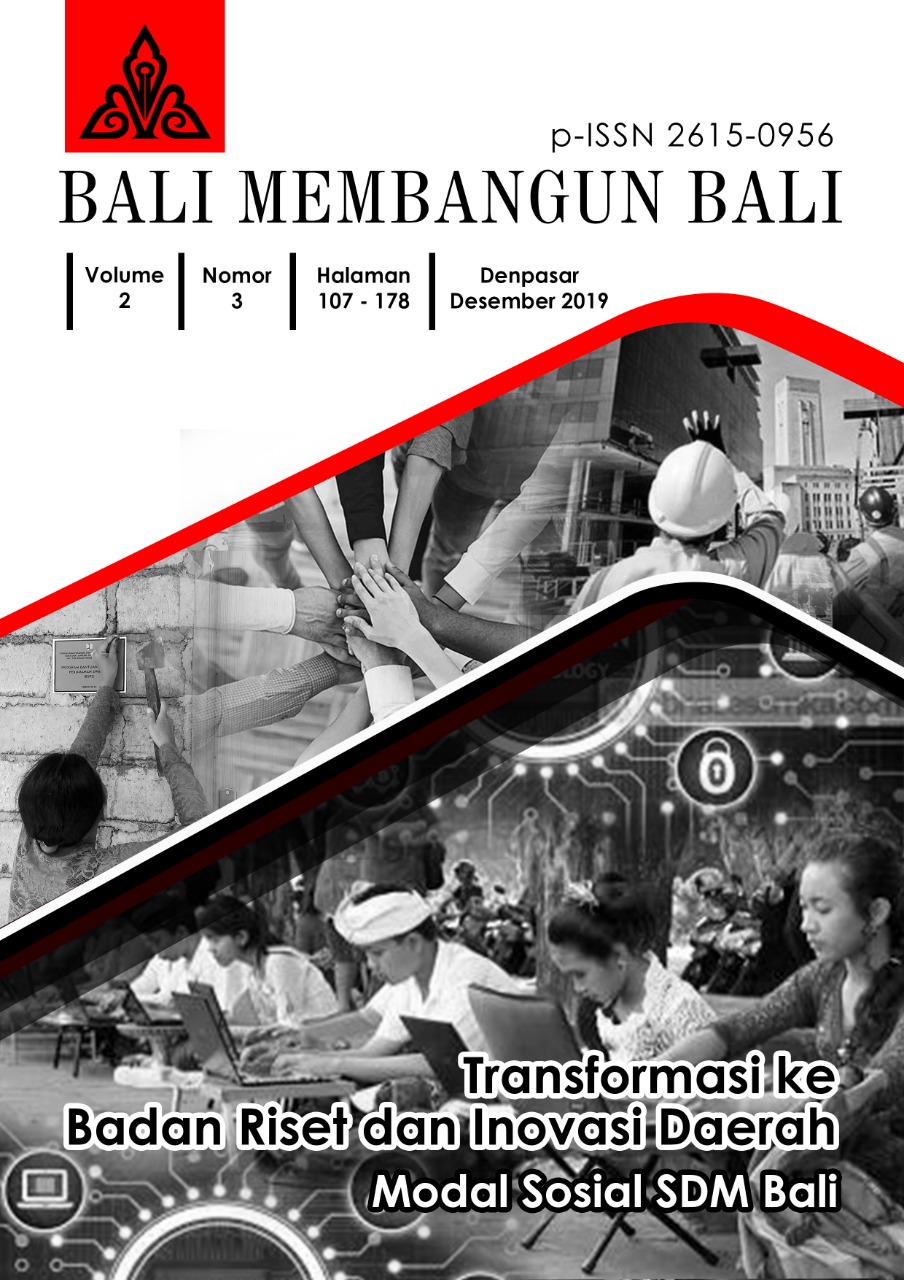Main Article Content
Abstract
Human resource development in the Bali Province can be illustrated through the development of the Human Development Index (HDI) achievements and employment conditions. Until 2018, HDI of Bali Province recorded continued to grow and is at a "high" level. The challenge that arises is that there are still gaps in the achievement of HDI at the regency level. Efforts to increase the Mean Years of Schooling (RLS) and per capita expenditure in regency with a "moderate" HDI status seem to be one solution to narrowing disparities in human resource development between regions. In view of employment conditions, Bali's Open Unemployment Rate (TPT) was recorded to be the lowest nationally. However, the low level of education possessed by most workers has an impact on the low wages or salaries that can be obtained. The study was complemented by causal analysis to see the effect of economic growth, investment, and the Provincial Minimum Wage (UMP) on employment in the Bali Province. Case studies are conducted according to data conditions that released by Statistics Indonesia for 2009-2017. The results showed that simultaneously all three variables had a close relationship with employment. This is indicated by the R2 value that recorded at 94,3 percent. Partially, economic growth has a positive effect on employment though not significant. Investment and UMP variables have a positive and significant effect on employment in the Bali Province.
Keywords
Article Details

This work is licensed under a Creative Commons Attribution-NonCommercial-ShareAlike 4.0 International License.
Authors who publish with this journal agree to the following terms:
Authors retain copyright and grant the journal right of first publication with the work simultaneously licensed under a Attribution-NonCommercial-ShareAlike 4.0 International (CC BY-NC-SA 4.0) that allows others to share the work with an acknowledgement of the work's authorship and initial publication in this journal.
Authors are able to enter into separate, additional contractual arrangements for the non-exclusive distribution of the journal's published version of the work (e.g., post it to an institutional repository or publish it in a book), with an acknowledgement of its initial publication in this journal.
Authors are permitted and encouraged to post their work online (e.g., in institutional repositories or on their website) prior to and during the submission process, as it can lead to productive exchanges, as well as earlier and greater citation of published work (See The Effect of Open Access).
References
- BPS. 2015. Proyeksi Penduduk Bali 2010-2035. Bali: BPS Provinsi Bali.
- BPS. 2019. BRS Ketenagakerjaan. Bali: BPS Provinsi Bali.
- BPS. 2019. BRS IPM Tahun 2018. Bali: BPS Provinsi Bali.
- Dewi, NLS dan I Ketut Sutrisna. 2014. Pengaruh Komponen Indeks Pembangunan Manusia terhadap Pertumbuhan Ekonomi Provinsi Bali. E-Jurnal Ekonomi Pembangunan Universitas Udayana Vol. 3 No. 3 [106-114].
- Furqon, A.M. 2014. Analisis Pengaruh PDRB, Upah Minimum, Jumlah Unit Usaha, dan Investasi terhadap Penyerapan Tenaga Kerja pada Sektor Industri Manufaktur di Kabupaten Gresik Tahun 1998-2012. Malang: Universitas Brawijaya.
- Kamar, K. 2017. Analisis Pengaruh Pertumbuhan Ekonomi dan Investasi terhadap Penyerapan Tenaga Kerja di Kabupaten Tangerang pada Tahun 2009-2015. Jurnal Bisnis & Manajemen Vol. 17 No. 1, 1-10.
- Tahir, K. 2018. Pengaruh Pertumbuhan Ekonomi, Investasi, Upah Minimum Provinsi terhadap Penyerapan Tenaga Kerja di Sulawesi Selatan. Jurnal Ekonomi Bisnis Syariah 1 (2), 110-132.
- Wijaya, Andi, dkk. 2014. Analisis Faktor-faktor yang Mempengaruhi Penyerapan Tenaga Kerja di Provinsi Riau. Jom FEKON Vol. 1 No. 2.

